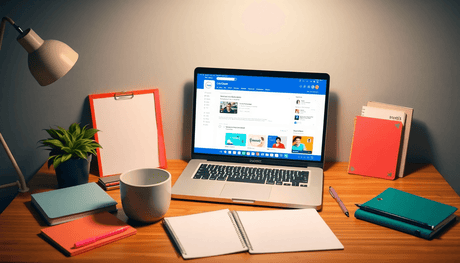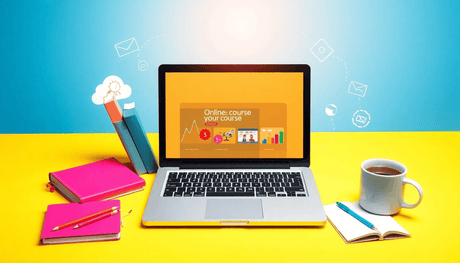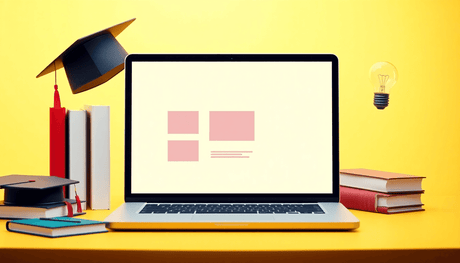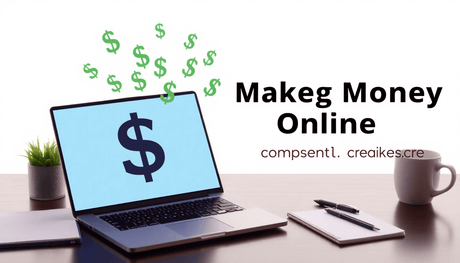Introduction
Private Label Rights (PLR) materials present a unique opportunity for educators to enhance their teaching practices. With PLR, you can purchase content that can be modified, branded, and resold. This flexibility makes it an invaluable resource for educators seeking to save time and effort in lesson planning.
Key benefits of utilizing PLR materials include:
- Time Efficiency: Quickly access ready-made content, reducing the hours spent on creation.
- Cost-Effectiveness: Minimize financial investment in developing original materials.
- Customization: Tailor resources to meet the specific needs of your students and curriculum.
By leveraging PLR, you can focus more on teaching while providing high-quality educational resources. Embracing PLR can transform your approach to education, making it more efficient and impactful.
Moreover, PLR doesn't just stop at traditional educational resources. You can also find specialized courses that cater to various fields such as auditing and assurance, which offers practical audit standards application; or successful meditation that provides Vedic frameworks for rich inner journeys in just 10 minutes a day.
For those looking to integrate technology into their teaching, there are also PLR materials available that focus on web development. For instance, the jQuery image slider project teaches how to create an image slider for web pages using jQuery, while the HTML5 game canvas course guides you through creating your first web-based game from scratch.
These resources not only save time but also provide an opportunity to engage students with interactive content. By embracing the potential of PLR materials, educators can significantly enhance their teaching effectiveness and student engagement.
Understanding Private Label Rights (PLR)
Private Label Rights (PLR) are a type of licensing that allows you to buy content and change it to make it your own. This content can include things like articles, e-books, videos, and courses. When you get PLR material, you have the right to edit, brand, and share the content however you want.
Licensing Options
There are different licensing options available within PLR:
- Resell Rights: You can sell the PLR content to others without making any changes. This is perfect for educators who want to share resources.
- Master Resell Rights: This gives you the power to sell the same rights to your customers, allowing them to resell the content too.
Ownership and Customization Rights
When it comes to PLR materials, ownership usually means that you own the rights to the content after you buy it. You can customize it in various ways, such as:
- Changing text or images
- Adding your branding
- Altering formats for different teaching styles
This flexibility ensures that educators can tailor resources to meet their unique needs while still owning the final product.
If you're particularly interested in video courses, platforms like Uthena offer a wide range of PLR video courses that you can purchase and resell. These courses come with various licensing options that allow for significant customization and branding, making them an excellent resource for educators.
1. Time and Cost Savings
Creating original teaching materials is often a time-consuming and costly endeavor for educators. The process can involve extensive research, design, and revisions, all of which demand considerable effort and resources.
Leveraging PLR resources not only saves valuable time but also reduces financial strain, enabling you to enhance your educational offerings without the burden of extensive preparation. Here are some key aspects to consider:
- Efficiency: PLR materials streamline the lesson planning process, allowing educators to focus more on teaching rather than content creation.
- Resource Allocation: By utilizing PLR resources, you can allocate your time and budget towards other important educational activities such as student engagement or professional development.
- Financial Implications: Investing in PLR content often costs significantly less than hiring freelance writers or designers for custom materials. This could be a crucial factor in achieving financial freedom in your professional life.
The advantages of using PLR resources are clear: they not only save valuable time but also reduce financial strain, enabling educators to enhance their educational offerings without the burden of extensive preparation.
2. Customization Capabilities
Having personalized teaching materials significantly enhances the learning experience for students. Tailored content can address individual learning styles and needs, ensuring that each student receives instruction that resonates with them.
Benefits of Customization:
- Curriculum Alignment: Educators can modify PLR materials to fit their specific curriculum requirements, ensuring coherence in lesson plans.
- Unique Teaching Style: With PLR content, you can adjust language, examples, and formats to reflect your teaching philosophy. This creates a more engaging environment for learners.
Examples of Modification:
- Transforming an e-book into a set of interactive worksheets that incorporate local contexts.
- Adapting video courses to include personalized commentary or supplementary resources that align with your subject matter expertise.
Utilizing PLR resources allows educators to create a rich, customized learning environment while still saving time and effort.
3. Rapid Content Creation
Using Private Label Rights (PLR) materials allows educators to access a variety of quick resources that enhance lesson planning efficiency. PLR content comes in multiple formats, including:
- Articles: Great for supplementary reading or discussion prompts.
- E-books: Comprehensive resources that can serve as textbooks or reference materials.
- Videos: Engaging visual content that supports diverse learning styles.
Strategies for leveraging these resources effectively include:
- Curate and Customize: Select specific sections of PLR articles or e-books to fit your curriculum.
- Combine Formats: Mix videos with written materials to create comprehensive lesson plans.
- Repurpose Content: Transform an article into a quiz or discussion topic, maximizing the utility of the original material.
These approaches enable educators to generate high-quality educational tools swiftly, saving time while enriching their teaching repertoire.
In addition, exploring subjects like Home Automation could provide valuable insights into integrating technology within the classroom. Similarly, an Introduction to using Git can equip educators with essential skills for managing digital resources effectively.
4. Diversification of Offerings
Educators can significantly enhance their teaching by integrating varied learning tools derived from Private Label Rights (PLR) content. This resource expansion allows for a richer educational experience through:
- Quizzes: Engage students with interactive assessments that reinforce key concepts.
- Worksheets: Provide hands-on activities that cater to individual learning preferences.
- E-books and Articles: Supplementary reading materials can deepen understanding and encourage independent study.
Addressing diverse learning styles becomes easier with a more varied range of teaching materials. Visual learners benefit from infographics, while auditory learners can engage with video content. Kinesthetic learners thrive on practical exercises. Utilizing PLR resources enables you to tailor your offerings, ensuring every student has access to the right materials that resonate with their unique learning preferences. By diversifying your educational toolkit, you create an inclusive environment that fosters success for all students.
5. Marketing Opportunities with PLR
Customized PLR content serves as a valuable asset for educators looking to promote new courses or programs. Here’s how you can leverage it effectively:
1. Lead Magnets
Create enticing lead magnets using modified PLR materials. This could include free e-books or mini-courses that provide value and capture potential students' interest.
2. Course Promotion
Use PLR content to design promotional materials that highlight the unique features of your upcoming courses. Engaging visuals and well-crafted messages can enhance your outreach efforts. For instance, you could even sell video courses without filming any by utilizing PLR video content.
3. Targeted Marketing Strategies
Employ specific strategies that resonate with your audience. Tailor your PLR resources to align with the interests and needs of your target demographic, ensuring relevance and increasing engagement. You might consider using PLR video courses on your website or online school to make learning more fun and approachable.
By utilizing these marketing opportunities, you can significantly enhance the visibility and appeal of your educational offerings, attracting more students while establishing a strong presence in your field. Understanding the different types of licenses such as PLR & MRR licenses, can also provide further insight into how these resources can be maximized for business growth.
6. Building Expertise and Credibility Through High-Quality Content Creation Using PLR Materials
Establishing subject matter authority is essential for educators aiming to enhance their professional reputation. Well-crafted courseware design plays a critical role in this process, allowing educators to present information clearly and effectively within their specific teaching domains. High-quality PLR materials serve as valuable resources in this endeavor.
Key benefits include:
- Enhanced Professional Development: Leveraging high-quality PLR materials can support ongoing professional development. Educators can adapt these resources to fit their teaching styles and classroom needs, ensuring alignment with curriculum goals. For instance, web development tools can be integrated into the curriculum to provide students with practical skills in a high-demand field.
- Continuous Learning: Utilizing PLR content allows educators to engage in continuous learning, refining their knowledge base over time. This practice not only enriches their expertise but also fosters a growth mindset. For example, advanced Python programming courses can help educators stay updated with the latest trends in programming.
- Authority Establishment: By customizing and delivering well-designed courseware, educators position themselves as authorities in their fields. This credibility can lead to increased student trust and engagement. Customizing content such as cryptocurrency mining courses or smartphone photography lessons can further establish their authority in these subjects.
Investing time in crafting personalized educational resources from PLR materials creates an opportunity for educators to showcase their expertise while enhancing the learning experience for their students. The strategic use of these tools contributes significantly to professional growth and reputation enhancement across various teaching domains.
7. Additional Income Opportunities Through Reselling Modified PLR Materials
Reselling modified PLR materials presents a viable path for educators seeking to generate additional income streams for side hustle purposes. This approach allows you to:
- Monetize Your Expertise: By customizing PLR content, you can create unique educational resources that reflect your teaching style and knowledge. These resources can be sold to other educators or students, providing a source of passive income.
- Flexible Business Model: The scalability of reselling PLR materials means you can choose how much time and effort to invest. You might opt for digital products or even workshops based on your modified content, catering to various audience preferences.
- Community Contribution: Sharing valuable educational resources enhances the overall learning ecosystem. As an educator, your contributions not only help others but also establish your reputation as a knowledgeable resource in your field.
While examining the potential benefits, consider the ethical implications and quality assurance of PLR materials. This ensures that your offerings are both effective and responsible. Engaging with the community through this practice fosters collaboration and shared growth among educators, creating a supportive network where everyone benefits from high-quality resources.
Additionally, if you're looking to pitch your business idea or seek investment while reselling these modified PLR materials, consider utilizing an Investor Business Pitch guide. This resource can help you effectively communicate your business model to potential investors such as venture capitalists or angel investors, thereby increasing your chances of securing funding for expanding your side hustle.
8. Ethical Considerations When Using PLR Content As Teaching Material
When using Private Label Rights (PLR) content for educational purposes, there are several ethical considerations that need to be addressed:
1. Copyright Issues
It's important to understand the licensing agreement that comes with PLR. Not all PLR materials have the same permissions, so make sure you have the right to modify, distribute, or sell the content without violating copyright laws.
2. Personalization Ethics
Customizing PLR content to fit your teaching style is valuable but must be done responsibly. Avoid presenting modified materials as entirely original work unless they have been significantly transformed.
3. Attribution and Transparency
If you choose to use PLR resources, consider acknowledging the source. This promotes transparency and builds trust with your students.
4. Quality Control
Not all PLR materials are created equally. Before integrating any content into your curriculum, assess its quality and relevance to maintain educational standards.
By being mindful of these ethical considerations, educators can effectively use PLR materials while upholding integrity in their teaching practices. Responsible usage ensures that both educators and students benefit from high-quality educational resources without compromising ethical standards.
For example, when using PLR content for subjects like Microsoft Excel, it's crucial to verify that the material is accurate and also respects copyright and personalization ethics.
Conclusion: Transform Your Teaching Practice Today With The Power Of Private Label Rights Material!
As an educator, you have a unique opportunity to enhance your teaching practices by utilizing Private Label Rights (PLR) material. The benefits are substantial:
- Save time and effort in content creation
- Customize resources to fit student needs
- Diversify educational offerings
Explore the potential of PLR materials to elevate your lessons. By leveraging these resources, you can not only improve your own teaching but also contribute valuable content to the education community.
Moreover, the skills gained from freelancing, such as content creation for platforms like YouTube or WordPress, can further enhance your ability to utilize PLR materials effectively.
Additionally, acquiring knowledge in areas like JAVA coding could provide you with more diverse resources to customize for your students. Embrace these powerful tools today and witness a transformation in your educational approach!
FAQs (Frequently Asked Questions)
What are Private Label Rights (PLR) and how can they benefit educators?
Private Label Rights (PLR) refer to a type of licensing that allows individuals to modify, rebrand, and sell content as their own. For educators, PLR materials provide significant benefits such as saving time and money on lesson planning, enabling customization of teaching resources to meet specific student needs, and offering a diverse range of educational tools.
How can educators save time and costs by using PLR materials?
Creating original teaching materials can be time-consuming and costly. By leveraging PLR resources, educators can quickly access ready-made content that can be modified for their lessons, significantly reducing the time spent on preparation and minimizing expenses associated with resource creation.
Can PLR materials be customized for specific teaching styles or curricula?
Yes! One of the key advantages of PLR materials is their flexibility. Educators can easily tailor PLR content to align with their unique teaching styles or curriculum requirements, ensuring that the materials resonate with their students' learning preferences.
What types of educational resources can be created using PLR content?
PLR offers a wide variety of educational resources including articles, e-books, videos, quizzes, worksheets, and more. Educators can utilize these diverse materials to enhance their lesson plans and cater to different learning styles among their students.
Are there marketing opportunities available for educators using PLR content?
Absolutely! Educators can use customized PLR materials as lead magnets or promotional tools for new courses or programs they are launching. By crafting effective marketing strategies around these modified resources, educators can effectively attract and engage potential learners.
What ethical considerations should educators keep in mind when using PLR content?
When utilizing PLR content as teaching material, educators must be aware of ethical considerations such as copyright issues and personalization ethics. It's important to ensure responsible usage practices by properly modifying the content while respecting the original creators' rights.









